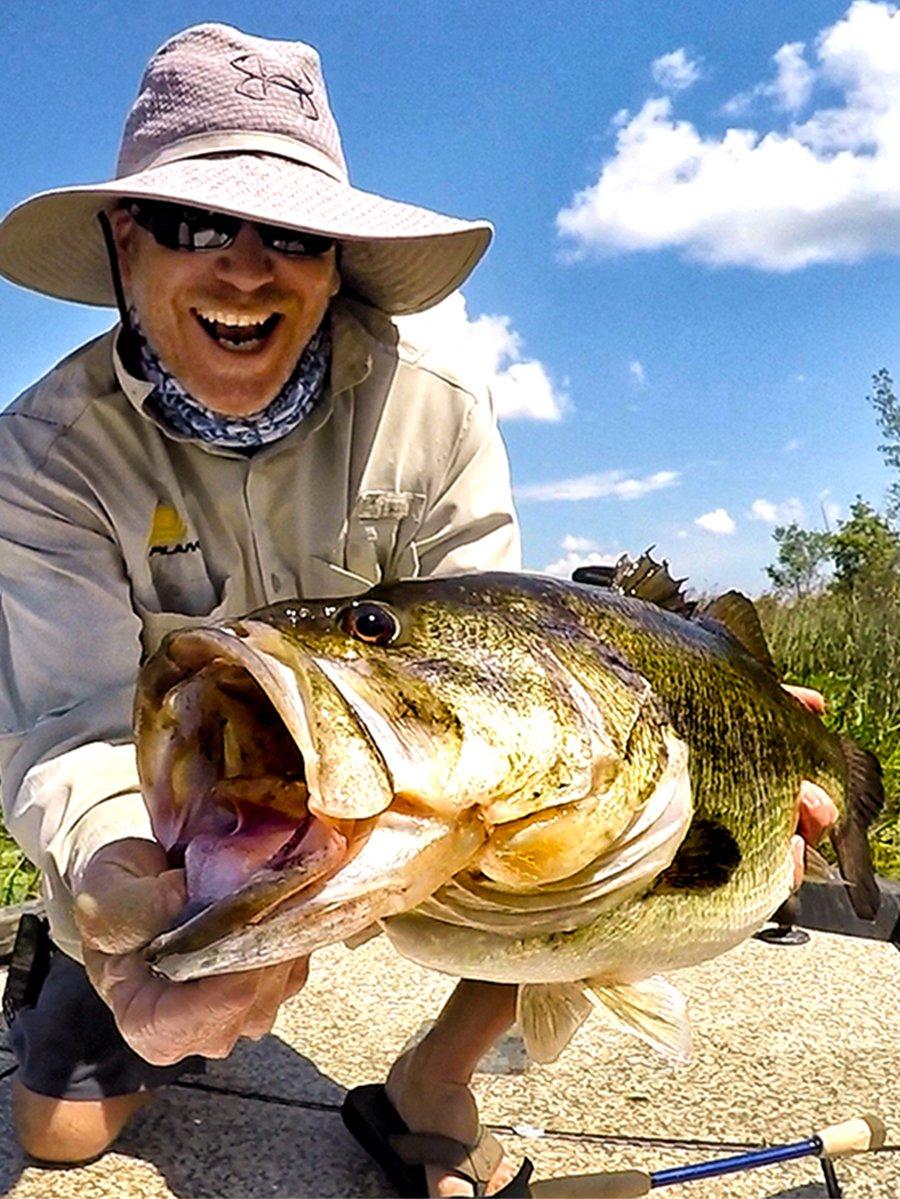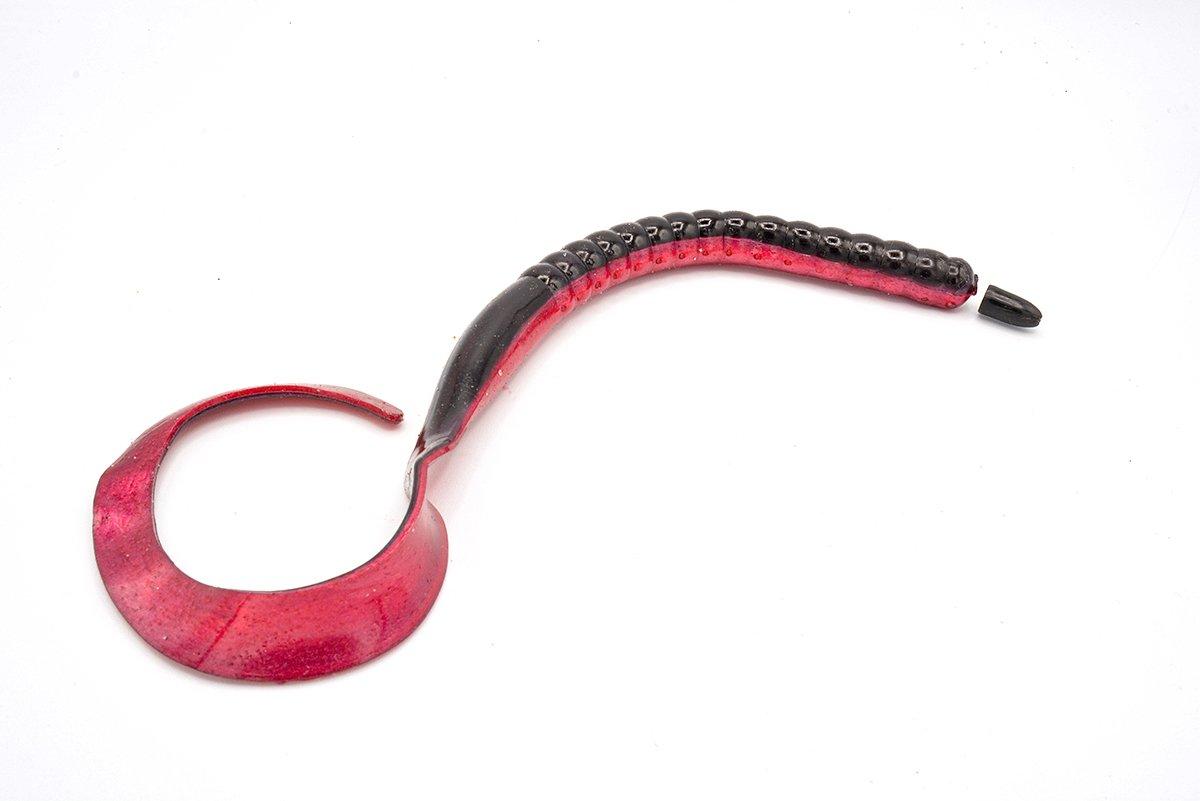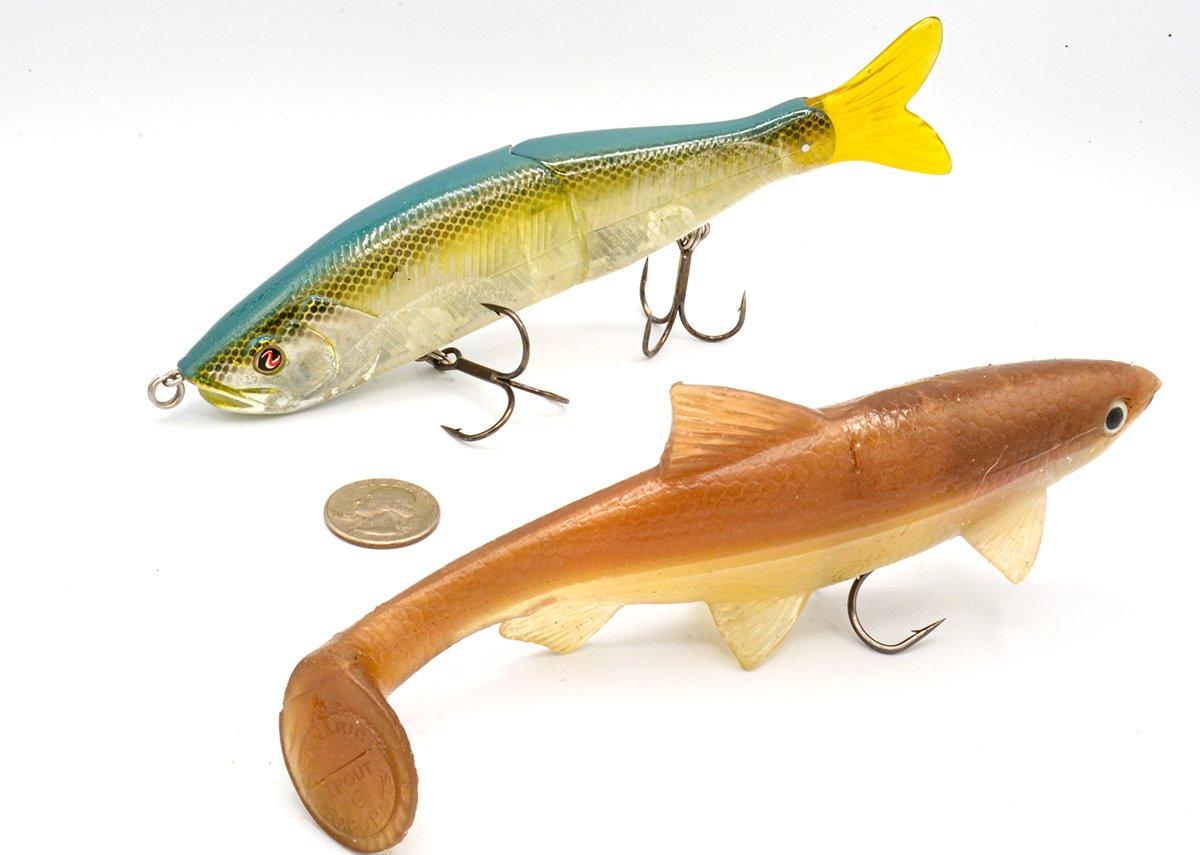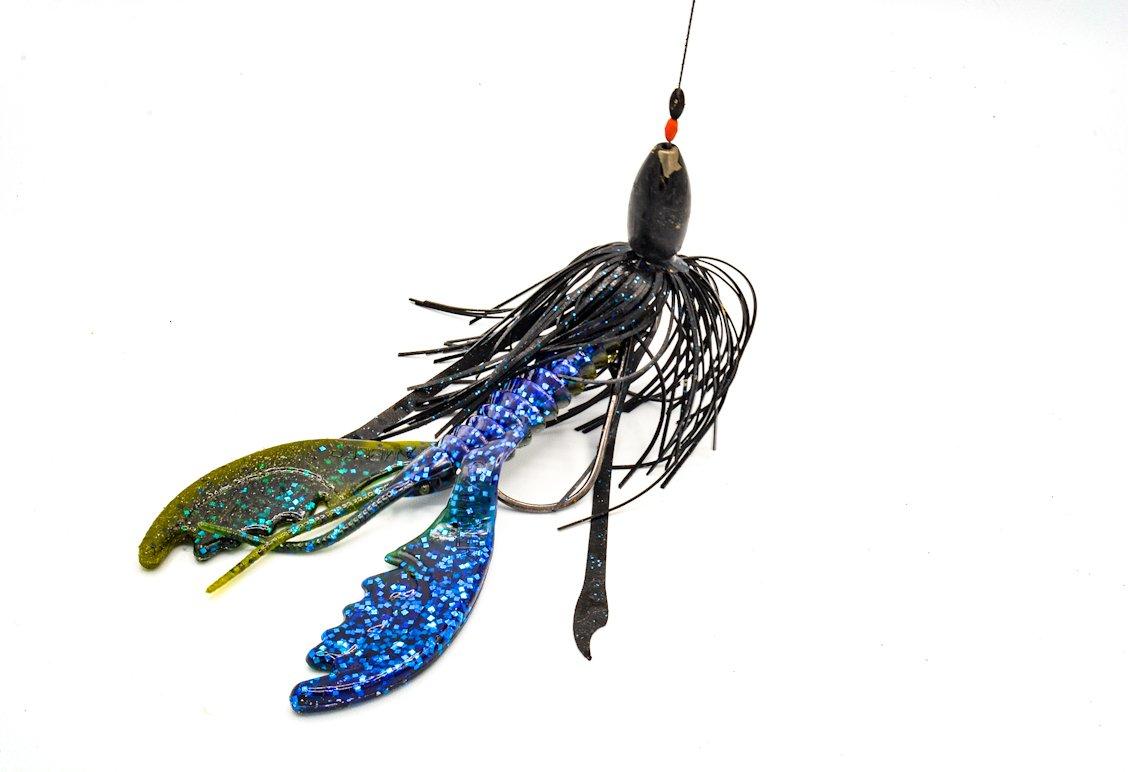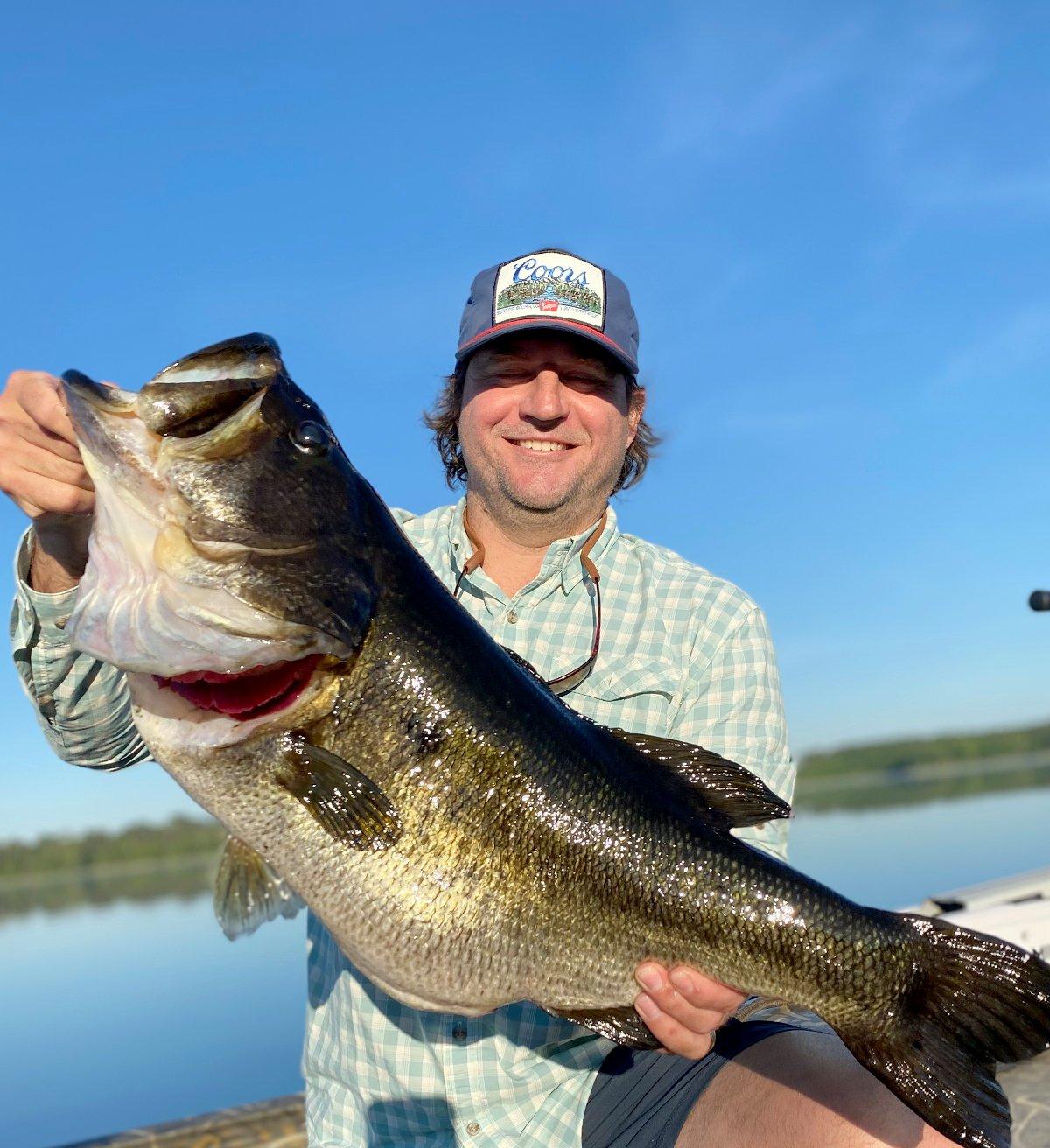Want to tie into double-digit largemouth on an artificial bait? You can't go wrong with these options
Do you dream of catching a 10-pound bass? Most bass anglers do. Long considered the benchmark for a trophy fish, catching a true 10-pounder is actually quite rare. Consider a quick fact: through my hardcore fishing forays here in the Sunshine State, I frequently make contact with some really big fish. Yet, in most years, I'll catch 10 bass weighing between 9 and 10 pounds for every one that registers double digits.
But crossing the 10-pound threshold is still doable. In fact, in many parts of the country, the chances of catching a giant are better now than ever. Pinning down the best spot is part of the battle. In short, Texas, Florida, California, and a few select waterways in the South (most notably Tennessee's Lake Chickamauga) give anglers the best shot at a ten.
My assignment here is to introduce you to the best lures for catching such a monster. But the task is biased. While the old saying a bass is a bass is sometimes true, a bass in the clear waters of a desert reservoir must be pursued far differently than one living in a tannic Florida swamp.
However, we can still provide a list of baits that give you the best shot. Because, as I've found through a lifetime of pursuit, there are lures, or lure categories, that gigantic largemouth bass seem to prefer. For good reason, those categories come up repeatedly over time in serious discussions of big bass.
Curious? It's time to let the cat out of the bag. Now, for the three best lures for catching a 10-pound bass.
1. Big Plastic Worms
Before you yawn and click off the page, make no mistake: This is not a rehash of the old plastic worm article that your grandad read 50 years ago. On the contrary, plastic worm fishing is much different today than it was back then. The modern era finds us utilizing technology that dramatically increases the chance for success. Side-imaging depth-finders, fluorocarbon and braided fishing lines, chemically sharpened hooks, and tungsten sinkers have all revolutionized ol' school worming.
The fact remains that a high percentage of big bass caught on artificial lures are taken on a plastic worm. Always have been. This is a result of the worm's lifelike, subtle appearance and random action.
Herein is the first piece to our big bass lure puzzle. Random-action lures — those reliant solely on the angler to impart lifelike movements — always catch more big bass than lures with built-in wobbles and kicks. That's not to say that you can't or won't catch a lunker on a deep-diving crankbait or topwater buzz frog. But if you're interested in increasing your chances, stick to a bait that you have to work.
(Don't Miss: Is It OK to Eat Bass?)
You see, it's impossible for bass, even big ones, to get accustomed to a plastic worm. You work it differently than I do, and I work it differently than the next guy up the creek. Like natural prey, a plastic worm moves in a sporadic, non-predictable way.
For big bass, stick to big lures, in this case. Plastic worms measuring 10 inches or longer are the starting point. Colors should be natural, dark hues in dark water, and more transparent colors in clear water. The standard Texas rig is tough to beat, and only use a sinker heavy enough to maintain good bottom contact.
Also, don't overlook swimming a big worm high off the bottom, much like a swimbait. One of my biggest Florida bass came swimming a 16-inch monster weightless over submerged hydrilla.
Finally, many anglers incorrectly match their hook to their lure when worming. Be sure to consider the diameter, or thickness, of the plastic worm when matching up a hook, as much as the length. Drive the point through the bait once to take a look and ensure enough hook point remains to get the job done.
2. Swimbaits
This is a broad category, no doubt. Here, I'm including all types of big, realistic swimmers, from a 6-inch hollow Basstrix to a monster California-style glide bait. I'm also including a soft swimmer like a Rago Trout, as well as big, segmented wake baits.
Maybe all this tech talk has you confused. Regardless, the lures in the swimbait category include all those big baits that, when retrieved in the water, can be mistaken for a live fish, even by the angler who just tied it on.
Often, the pursuit is maddening, as days might go by without strikes. Rest assured, however, that any hit is going to be a big 'un.
The reason for diversity in the swimbait group matches the diversity in bass habitat we mentioned earlier. In Florida, for example, I don't need a lure to fish in 30 feet of water. But I do need one that looks like a single, big prey fish, just like out West.
That's the key here to this group of baits, and another big bass lure characteristic. The intention is to mimic a single, large prey item that a monster can capture and be finished eating for the week. We find this all across the board of big bass fishing. In the Mid-South, the large prey item is often gizzard shad. Big swimbaits, often fished on heavy jigheads, perform on river ledges. Out west, the prey could again be shad or even trout. The California experts are still out slinging huge baits for that reason. In Florida, lunkers go ga-ga for huge wild shiners. I match their appearance with big glide baits that entrance the biggest bass in the lake.
(Don't Miss: Why You Suck at Throwing a Baitcaster)
The key here is to get a few lures that match your scenario, learn to use them, and keep throwing them. Often, the pursuit is maddening, as days might go by without strikes. Rest assured, however, that any hit is going to be a big 'un.
Early on in my swimbait addiction, I struggled to cast many lures, as some are far from aerodynamic and grossly heavy. Stepping up to a musky rod, and swinging the baits overhead (the old tourist cast), helped me launch them. From there, it's just a matter of getting used to the lure's massive splash-down, keeping it in your hand through thick and thin, and thereby developing confidence.
3. Punch Baits
No, not catfish dip baits. In the bass world, punch baits are compact plastics rigged with ultra-heavy weights that allow anglers to crash the lure through the thickest of cover. Matted weeds, like hydrilla and milfoil, are common targets. In Florida and select other locales, floating vegetation, like pennywort and hyacinths, forms mats dense enough for alligators to walk on, requiring some serious muscle to get a bait to the bass waiting below. The punching technique is also effective for dense trash mats containing logs and flotsam after a flood, or the chopped-up eel grasses that tend to gather around boat docks.
Rest assured the biggest bass in the lake will take up refuge anywhere dense cover forms a canopy. Our final lunker characteristic, there's something about an overhead lid that attracts the giants. It's likely a combination of a shadow to lurk in, a way to pin unsuspecting prey fish and keep them from escaping, and protection from overhead predators and man.
(Don't Miss: Jacob Wheeler on Life and Bass Fishing)
Punch rigs, as they're called, require an insanely heavy weight. One ounce is the starting point, and many anglers will go as heavy as 2 ounces. Due to their compact size, tungsten weights are mandatory, and should be pegged to the plastic lure using a bobber stop.
In terms of baits, stick to compact plastics with a crawfish-style profile. This is no place for long worms or leggy lizards, as they resist penetrating the cover. The original Sweet Beaver was created for punching, and it still plays today. New additions like the Zoom Z-Hog and Missile Baits D-Bomb are two of my Florida favorites.
From here, the technique calls for a long rod and braided line. Fifty-pound test is my favorite. The rod should be stout, but have a little flex in the midsection. Fancy rod builders call this a parabolic action, and it makes for easier flips and a better ability to load up and haul trophy fish out of cover.
One final note: We frequently hear tips from the pros to avoid hard hooksets when punching heavy matted vegetation. This is good advice, but needs further explanation. Think of it this way: if you wanted to throw someone out of your house, would you push them into the door, or grab hold and drag them through it? Punching power requires a hard sweeping hookset, combined with steady reeling and no slack in the line, ever.
This is your year for a double-digit bass; I can feel it. Incorporate these three proven lures, and you'll immediately up the odds. Often, that's the most important part.
(Don't Miss: The Best Tactics for Wintertime Surf Fishing)

